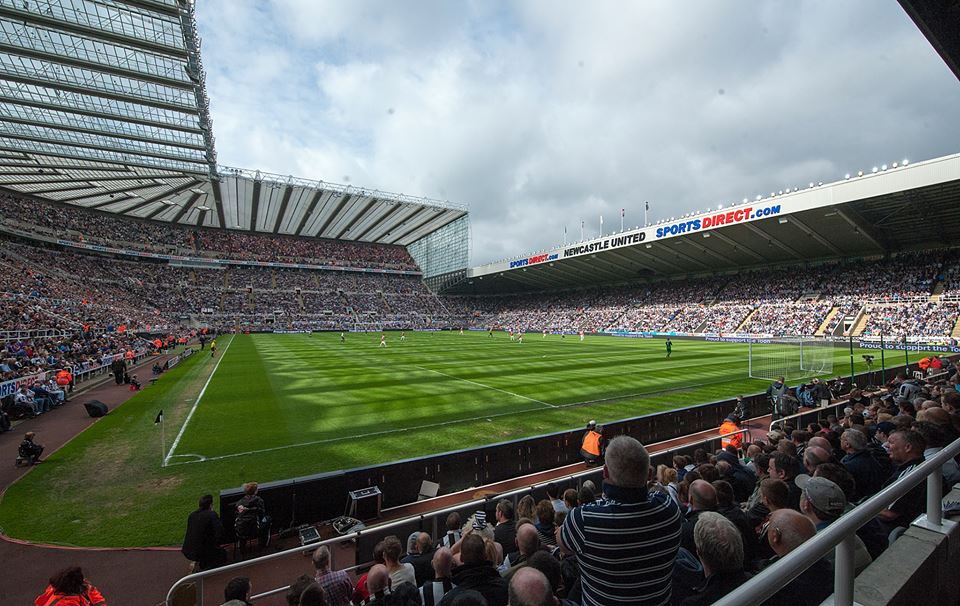Promotion and relegation in English football has its ups and downs.
Each year, teams move up or down leagues as a result of the promotion and relegation process. American fans get to see new teams, but others drop off the map. For non-local fans, broadcasting often determines exposure, and lower leagues are not often broadcast.
With new teams come new venues. Others are, at least temporarily, removed from view.
In the Premier League this year, the three promoted clubs are Brighton & Hove Albion, Huddersfield Town and Newcastle United.
Newcastle United, returning after one season in the Championship, play at the formidable St. James’ Park. The seventh largest stadium in England at a more than 52,000 capacity, it boasts a massive cantilevered roof, among the largest steel truss cantilevered structures in Europe. St James’ is intimidating for opposing sides – the Gallowgate End, akin to Liverpool’s Kop, is ominously named for its proximity to the city’s traditional gallows, and features the club’s most vocal fans.
Huddersfield Town plays at John Smith’s Stadium, formerly known as Kirklees Stadium. Opened in 1994, it was designed by HOK Sport and won a Building of the Year award for design from the Royal Institute of British Architects. Also a rugby ground, the 24,500 capacity stadium is also the home of Huddersfield Giants RLFC, and has hosted Rugby League World Cup games in three competitions.
Brighton & Hove Albion’s home is the modern Falmer Stadium, currently known as American Express Community Stadium. Opened in 2011, it has undergone continuous upgrades and expansion since its opening, going from a capacity of 22,000 to 30,000 as the team’s fortunes have improved. Brighton is known as a seaside resort, and as a result the stadium has seagull issues. Hawks have been employed to scare away the seagulls and to deter pigeons from nesting in the stadium.
Although varying in size, the new stadiums on view in the Premier League this season are in the middle of the pack in terms of size. Tottenham Hotspur will have the largest stadium this year as they play for a season at London’s 90,000 capacity Wembley Stadium, though Old Trafford is the largest regular ground at 75,643. The smallest stadium remains Bournemouth’s Dean Court at just 11,464 – smallest capacity in the league by almost 10,000 – although they are looking to build.
The teams relegated from the Premier League last season were Hull City, Middlesbrough and Sunderland. Of these, the largest ground is Sunderland’s Stadium of Light, which at a capacity of 49,000 will become the largest stadium in the EFL Championship. Hull’s KCOM (24,404) and Middlesbrough’s Riverside (34,742) will put them in the top half of Championship stadiums by capacity.
By contrast, league compatriots Burton Albion’s Pirelli Stadium has a capacity of 6,912 (2,034 seated) – a truly tiny ground. Outside it, Brentford’s Griffin Park (12,300 including a standing terrace) and QPR’s Loftus Road (18,360), however, all EFL stadia hold more than 20,000 fans.
For fans of English football, the process of promotion and relegation brings with it opportunity and loss. The opportunity to see new teams and their venues, but the loss of others.
The unique thing about the system is that the only thing that determines a team’s standing is what happens on the pitch. In the case of their stadia, size truly doesn’t matter.
The new stadiums of the Premier League will be on view when the season kicks off on August 11.
Image courtesy New Castle United.
This article first appeared in the weekly Soccer Stadium Digest newsletter. Are you a subscriber? Sign up here for your free subscription!

